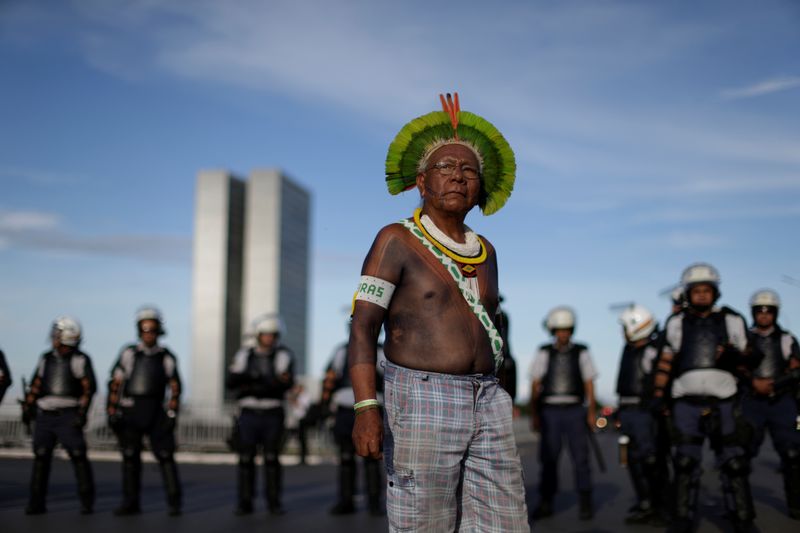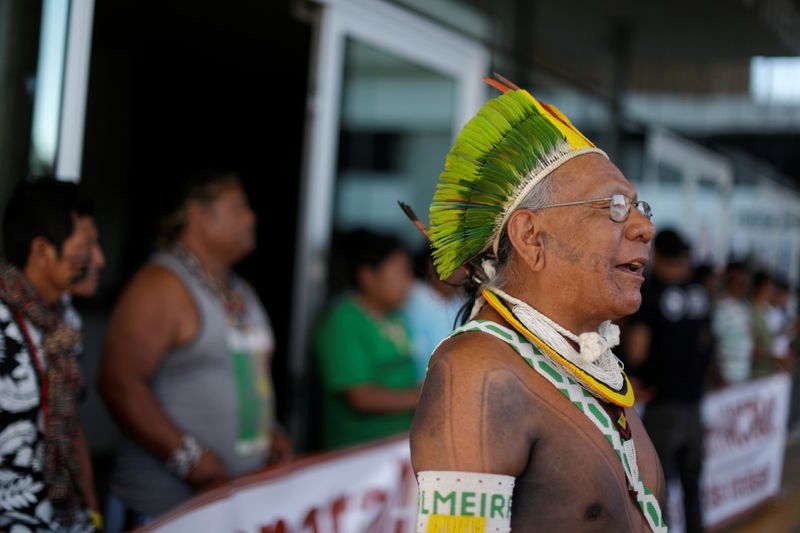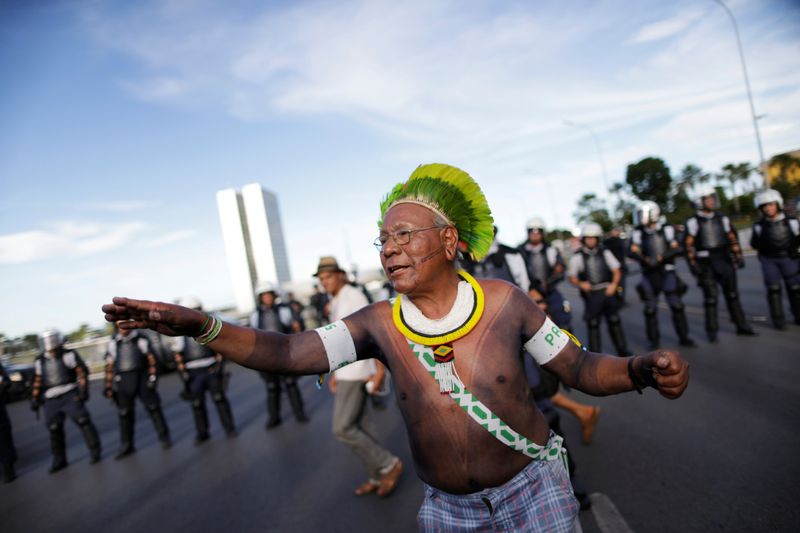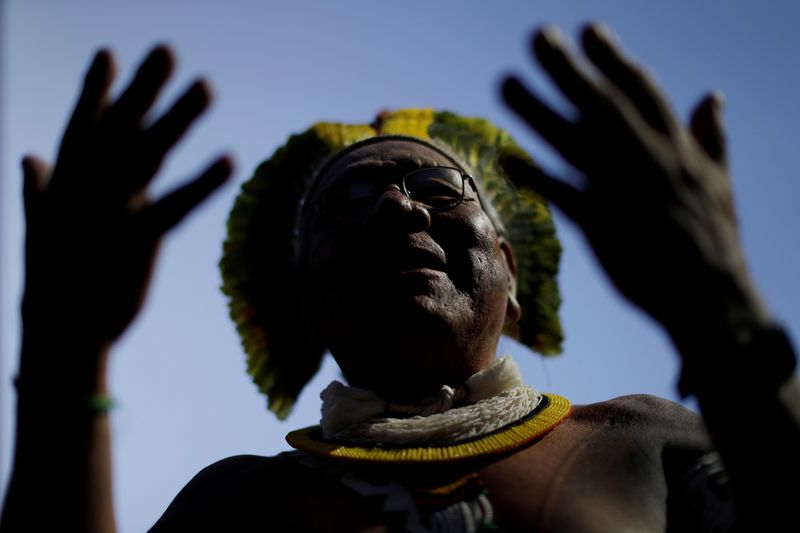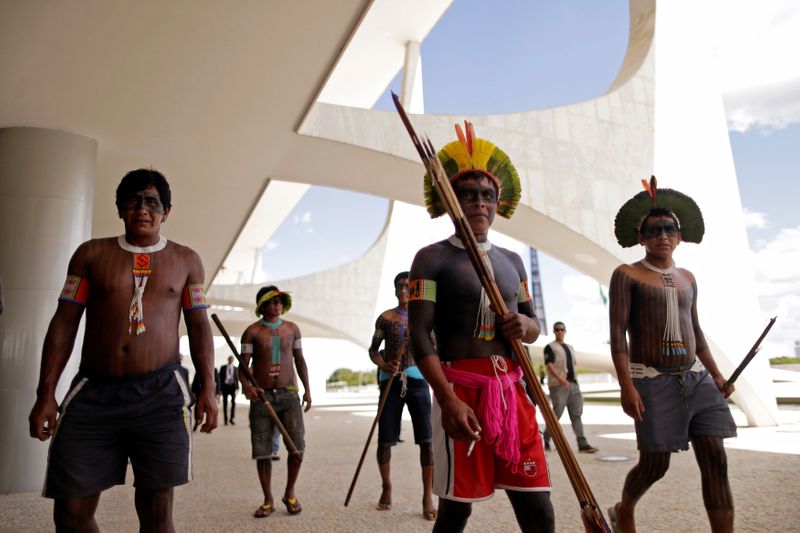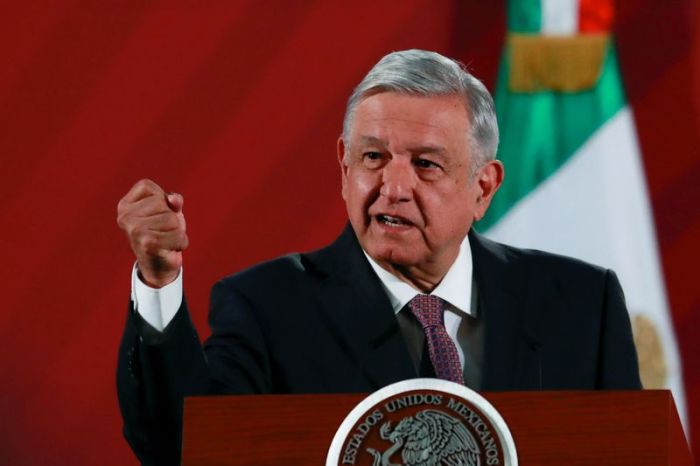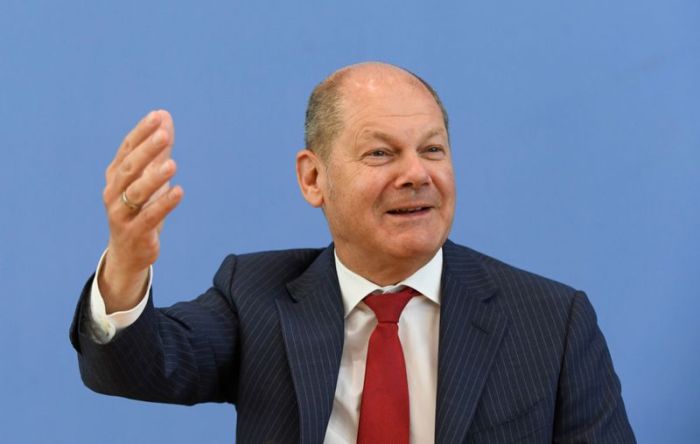BRASILIA (Reuters) – Brazil’s indigenous people lost one of their pioneering leaders to COVID-19 on Wednesday with the death of Paulinho Payakan, a Kayapó chief who led protests against the Belo Monte hydro-electric dam in the 1980s.
Alongside Kayapó chief Raoni and musician Sting, Payakan helped bring international attention to the environmental and social cost of building the world’s third largest dam on the Xingu river in the Amazon rainforest.
Payakan, 66, died on Wednesday morning in the hospital of Redençao in southern Pará state, where the coronavirus epidemic has spread among indigenous communities and is killing tribal elders.
The Kayapó chief was sentenced in 1998 to six years in prison for the rape of an 18-year-old student in 1992 with the assistance of his wife, who was also convicted.
The crime badly hurt Payakan’s reputation, said Sydney Possuelo, Brazil’s best-known explorer of isolated Amazon tribes who was head of the government’s indigenous affairs agency Funai at the time.
Still, Possuelo praised Payakan for seeking the economic survival of his tribe while maintaining its indigenous identity.
One fruit of his efforts was a deal with eco-friendly cosmetic retailer The Body Shop and its socially aware Trade Not Aid marketing initiative, by which the tribe gathered Brazil nuts in the rainforest for the extraction of oil used to make cosmetics.
The British company is now owned by Brazilian cosmetics group Natura & Co.
Belo Monte started generating electricity in 2016, but the original design was scaled down due to an international outcry and the dam only produces about a third of its planned 11,200 megawatts.
(Reporting by Anthony Boadle; Editing by Tom Brown and Sonya Hepinstall)

